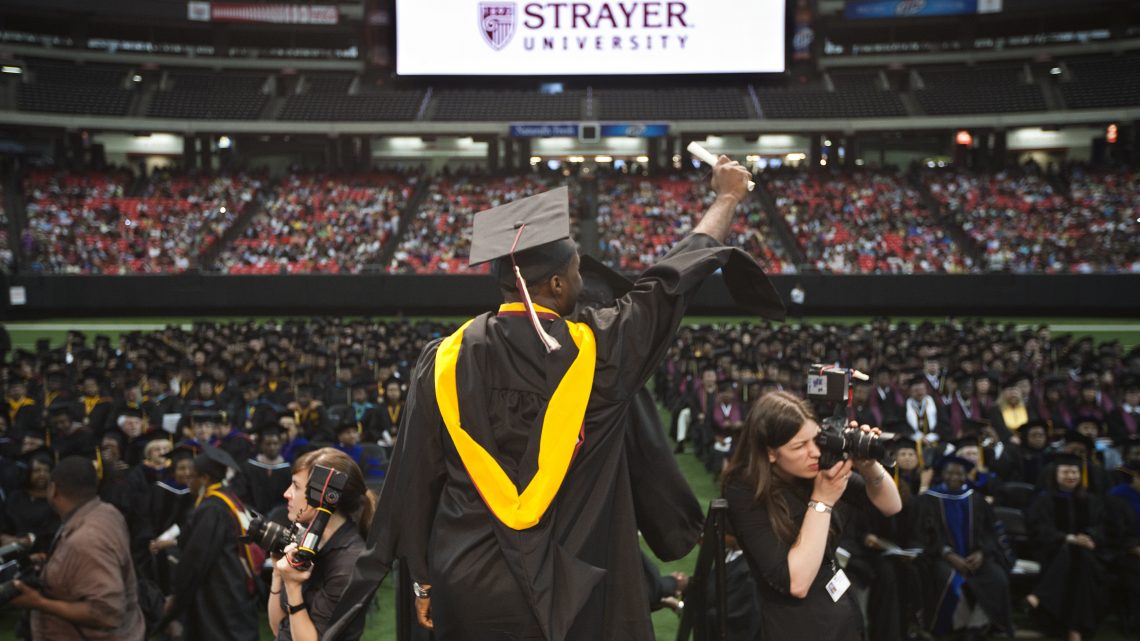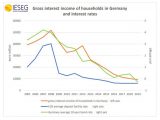
How For-Profit Colleges Have Targeted and Taken Advantage of Black Students
September 10, 2019In a 2015 TV spot, comedian Steve Harvey told a room full of people that if they didn’t like their lives, they should change them. "If you keep doing what you’ve been doing, you’re gonna keep getting what you’ve been getting," he said. "Make the decision to move your life forward, go to a place that can help you get it done, and go see what else life’s got for you."
It sounds like the kind of boilerplate inspirational messaging you'd expect from the host of Family Feud. But the commercial was part of an ad campaign from Strayer University, a for-profit school that has marketed itself to people of color; another ad featuring an inspirational Queen Latifah speech and shots of ecstatic Black people. There's reason to be skeptical about the life-changing potential of a Strayer education: According to the Brookings Institution, graduates from Strayer hold more total student debt than those of the notoriously expensive New York University, and they struggle to pay back their loans on a median salary of about $46,000.
A new report co-written by left-leaning think tank the Roosevelt Institute highlights the role this predatory race-based marketing plays in the racial wealth gap, placing it alongside job discrimination and lack of generational wealth as key factors in why Black students often find themselves owing more money than their white peers. These factors are also intertwined: As the report points out, many of these schools market themselves as being able to help students navigate the loan system—a campaign that was particularly effective on Black people, who’ve historically been shut out of lending systems.
According to the report, Black students today make up about 13 percent of the students at public colleges, but 21 percent of the people enrolled in for-profit schools. (While 57 percent of white students took out educational loans within 12 years of entering school, that number is a whopping 78 percent for Black students, the report says.)
For years, for-profit schools like Strayer have been criticized for not delivering the benefits they promise to students while being funded by taxpayers in the form of federally subsidized student loans. Flush with this cash, some of the biggest names in the game, like DeVry, went public in the 90s. Enrollment at these places rose after the 2008 economic crash, as an unfriendly job market led people to go back to school. In addition, there’s always been a societal pressure on people of color to have more credentials than their white counterparts, and for-profit schools may have taken advantage of this pressure by marketing themselves to them.
Basically, these for-profit schools, which were already banking off of deregulation, knew they could cash in by enrolling jobless people of color. According to a 2015 article in the American Prospect, the University of Phoenix was spending at one point almost $400,000 a day on advertising—much of which was shown on daytime television, at bus stops, and subway stations in primarily Black and brown communities.
A 2012 Senate investigation showed how these schools took advantage of the panic that arose out of the recession through coded language. Recruiters at the St. Louis-based Vatterott College were told to go after people with "recent incarceration" issues and "welfare mom[s] w/ kids." According to the presentation, the ideal target was someone who also lived "in the moment and for the moment" and who made decisions using emotion rather than logic. The recruiters were also made to participate in gamified recruitment "blitzes," make 50 calls per day, and harass people who had shown interest in enrolling. "In 2008, the 'Vatterott Derby' pitted campuses against each other based on the number of weekly calls, contacts, and interviews," according to the Senate report. "The Quincy, IL, campus director told her recruiters that if they could get 70 enrollments in 1 week, ‘there maybe something in it for you….. hehehehehhehe (other than changing people’s lives of course.)'" She ended the message with a smiley face. (Vatterott closed last year.)
Black celebrities were also included in advertisements. Besides Harvey and Latifah shilling for Strayer, the Reverend Al Sharpton sang the praises of University of Phoenix in a 2013 special called "Advancing the Dream: Live at the Apollo," which was referred to as a "live, star-studded, two-hour" event by MSNBC, and was co-sponsored by the aforementioned school.
Though the schools and their celebrity endorsers have not really responded publicly to the criticisms against them, the chief of staff of the education group that owns University of Phoenix told the Atlantic in 2015 that the behemoth’s was working to improve graduation rates. Meanwhile Harvard economist David Deming also told the magazine what a likely response would look like. "If you talk to someone at a for-profit college, one thing they would likely say is that, well, the students we bring in are likely to have lower potential earnings whether they go to our school or not and so it’s not really fair to compare their earnings to people who went to public schools, and I think that’s a legitimate complaint," he said.
Whether or not that’s true, this new report shows how the current student debt system is both more necessary and more risky for Black families to engage in, and it ultimately points to the fact that the Higher Education Act is overdue for reauthorization. That means the rules could be re-written in the next few years, if only policymakers were willing to take a different approach and change their assumption about the student loan system. Though technically possible, it seems unlikely under Donald Trump. Rules passed under the Obama administration forcing for-profit schools to disclose information about graduates' salaries were struck down this year by Education Secretary Betsy Devos.
Sign up for our newsletter to get the best of VICE delivered to your inbox daily.
Follow Allie Conti on Twitter.


